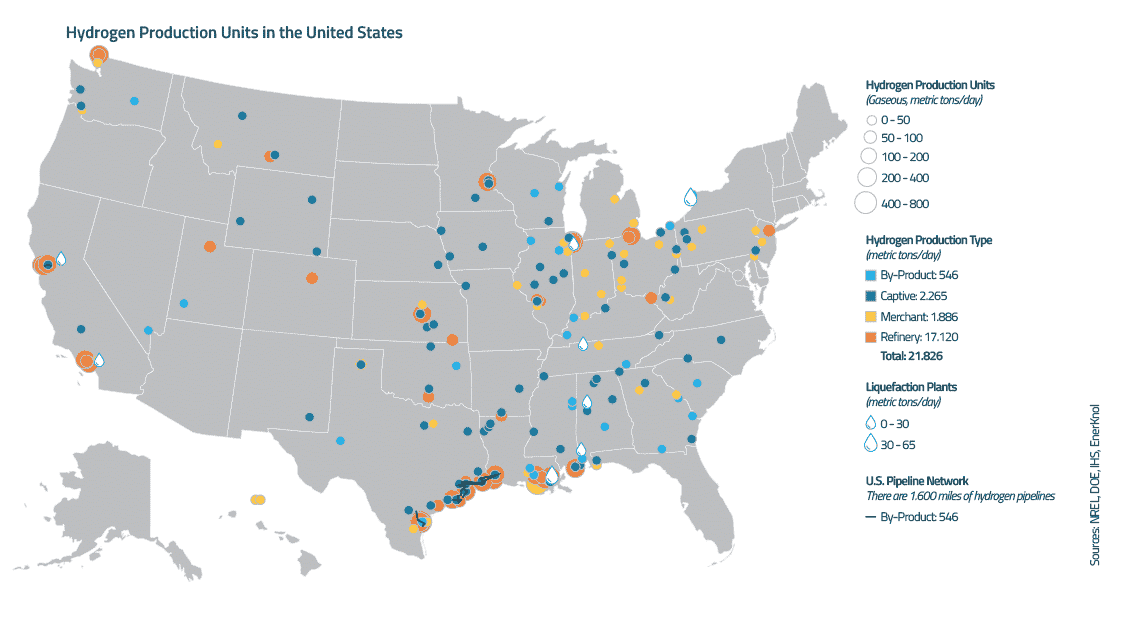U.S. Energy Department Plans $1 Billion Demand-Side Initiative to Advance Clean Hydrogen Hubs

The U.S. Energy Department on July 5 announced that it is considering establishing a demand-side initiative with an investment of up to $1 billion to help advance clean hydrogen hubs. The 2021 Infrastructure Investment and Jobs Act, or IIJA, authorized $8 billion from 2022 through 2026 to establish a program that supports the development of regional clean hydrogen hubs, or H2Hubs. The new initiative is intended to ensure that producers and end users in the H2Hubs have market certainty required to attract private investment during the early years of production and realize the full potential of clean hydrogen.
The department proposed a mechanism to help connect the H2Hubs to prospective purchasers, in order to facilitate strong demand and sufficient customers. The demand-side support mechanism will provide multi-year support for clean hydrogen supplied by competitively selected projects affiliated with H2Hubs and allow bankable demand from a diverse set of offtakers. Further, various entities, including non-profits, local governments, and tribes can leverage the resource for applications across multiple sectors, such as industrial processes, manufacturing, and heavy-duty transportation.
A hydrogen demand-side initiative would help meet the requirements of end users who generally seek the flexibility of shorter-term contracts as well as confidence in the long-term availability of the resource to consider critical, long-term investments. The department also underscored the crucial role of a such an initiative to ensure early commercial viability of a H2Hub considering that demand formation for a new source usually lags creation of reliable supply.
The department has received 79 concept papers to create H2Hubs, and has issued notifications announcing that 33 of the applicants are encouraged to move forward to submit full applications, which were due on April 7. Among other major developments, the department recently announced that hydrogen production has begun at Constellation Energy Corporation’s Nine Mile Point Nuclear Plant in New York – the first-of-its-kind facility in the U.S. to generate clean hydrogen using nuclear power. The initiative is one of four projects supported by DOE to demonstrate clean hydrogen production at commercial nuclear power plants.
The H2Hubs program will help create the foundation of a national clean hydrogen network, which is key to cut emissions from some of the most energy-intensive sectors. The IIJA calls for the development of a roadmap and strategy to facilitate wide scale hydrogen use, as well as a clean hydrogen production standard. Last month, DOE announced the release of the U.S. National Clean Hydrogen Strategy and Roadmap, providing a framework to speed up the production, processing, delivery, storage, and use of clean hydrogen. The report explores opportunities for clean hydrogen as an energy carrier that can be produced with low or zero emissions to support national decarbonization goals across multiple sectors of the economy. Hydrogen can be produced from clean energy sources including wind, solar, and nuclear energy. Later this year, the Biden administration will announce the selection of six to ten H2Hubs for a combined total of up to $7 billion in federal funding.
The department is seeking public input to inform the design of a demand-side support mechanism for the H2Hubs program. Responses are due July 24, 2023.
EnerKnol Pulses like this one are powered by the EnerKnol Platform—the first comprehensive database for real-time energy policy tracking. Sign up for a free trial below for access to key regulatory data and deep industry insights across the energy spectrum.
ACCESS FREE TRIAL